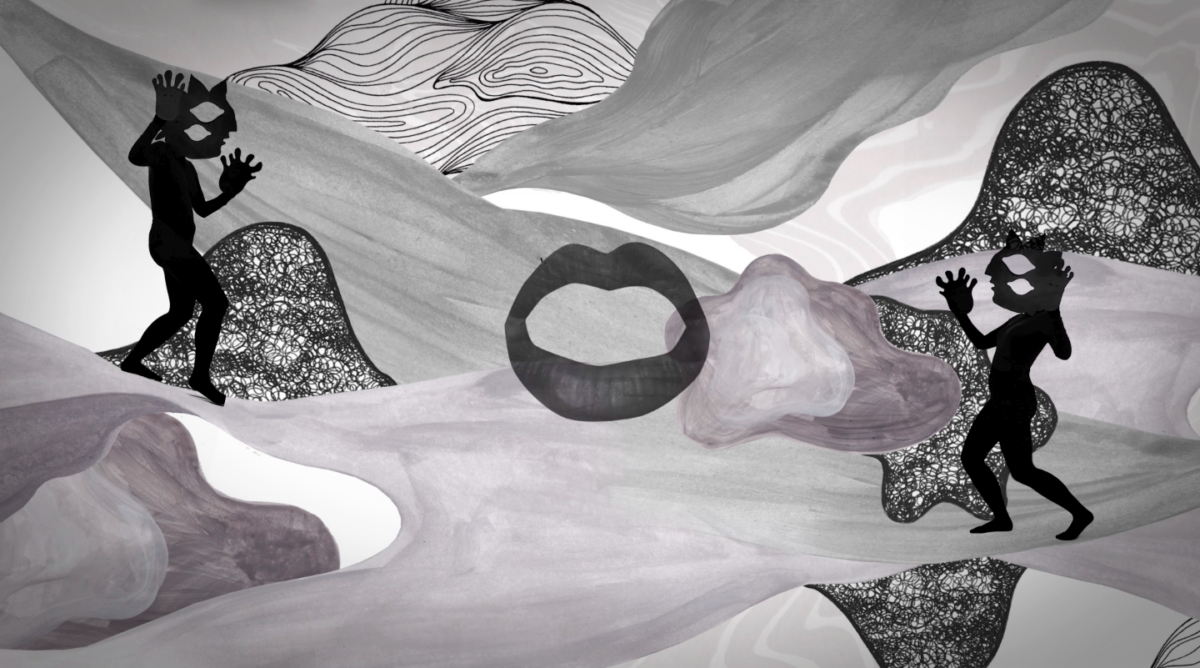Ten black shapes tumble from a hand onto an undulating landscape, divided by scribbles, clean lines and grey wash. The settled forms, summoned by the sings of a harp, emerge as human silhouettes, some with masks and outsized palms. A mouth swallows the screen, provoking a descent into a hell-circle of tonsils, a temporary enclosure that leads onto a phantasmal plain, populated by angled legs, diamonds, seashells, petals, knights and artichokes. All the while, the hairpins of crescendo and diminuendo, comprising a filigree of strings, brass and percussion, are punctuated by a soprano voice that rises and falls on the same sonic incline.
How do we make sense of these sights and sounds? Let’s work back from the end: “Myth is the facts of the mind made manifest in a fiction of matter.” Maya Deren’s looping maxim provides the film’s full stop, and the symmetry of fact/fiction and mind/matter, already a beguiling construction, provides the retrospective grammar for its visual form. While Gabriel Chwojnik’s score functions as a piece of deceleration, insistent on scaling down the octaves, Sine and Imge Özbilge’s intricate animation establishes a layering of different realities, a disaggregation of images.
The film takes its title from Deren’s enduringly radical work, Meshes of the Afternoon (1943), itself famously an expression of the subconscious, but one which articulates, in Deren’s words, “a critical emotional experience.” That, we might argue, is the essence of cinema. But in the Özbilges’ Meshes, the technologies of abstraction—the connection of fact and fiction, of mind and matter—offer an adjacent cinematic language, one which exposes rather than resolves the crisis of representation.
